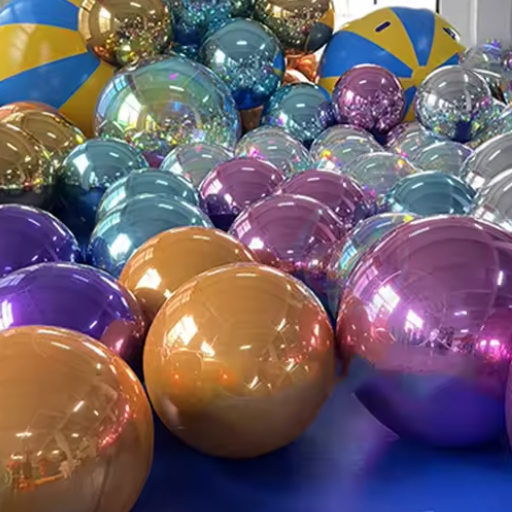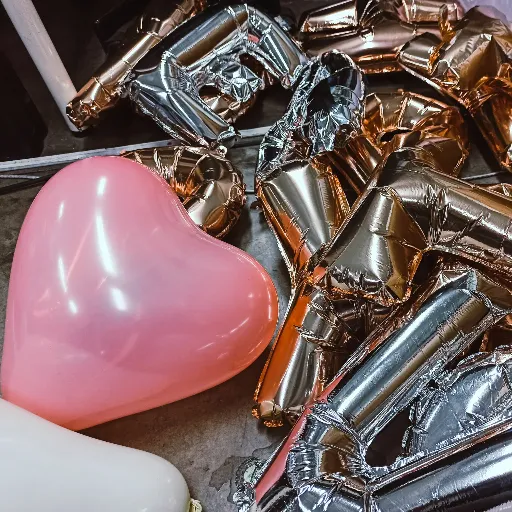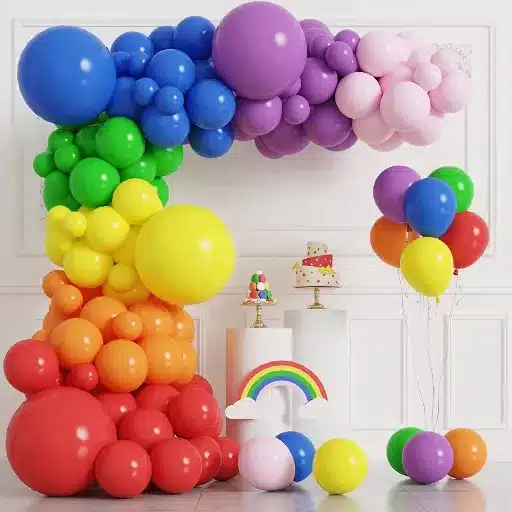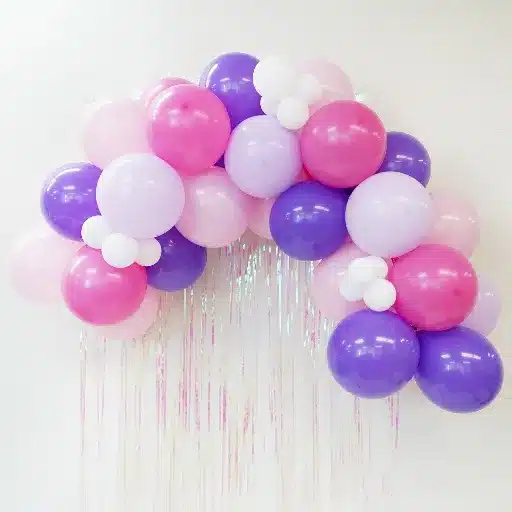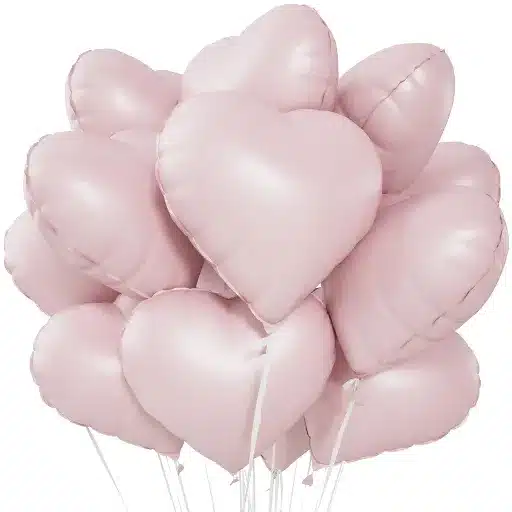Quick Summary: To deflate a helium foil balloon, simply insert a straw or thin object into the self-sealing valve, press down to release the helium gas, and gently flatten the balloon as the air escapes. This allows for safe storage, reuse, or proper disposal.
Helium foil balloons are party-pleasers, adding a nice, festive feel to any event. What now after the party? While the balloons are slowly deflating naturally, consider giving them a quick deflation. This step will surely save you time, along with easier storage or disposal. This guide walks you through a simple, step-by-step process to safely deflate foil balloons for reuse.
Understanding Helium and Mylar Balloons

Helium foil balloons are Mylar balloons, which are especially common for festive and special occasions because of their shiny surfaces and ability to float when filled with helium gas. Here are the key facts you should know:
| Aspect | Latex Balloons | Mylar/Foil Balloons |
|---|---|---|
| Material | Natural rubber latex | Metallic polyester film |
| Porosity | High (faster deflation) | Low (slower deflation) |
| Float Time | 8-12 hours | 3-7 days |
| Reusability | Limited | High (with proper care) |
| Environmental Impact | Biodegradable | Non-biodegradable |
Did You Know? The global demand for helium is rising due to its applications in healthcare (MRI machines) and electronics (semiconductor manufacturing). Conservation of helium has become a major concern, with the helium market expected to grow beyond $3.3 billion by 2028.
Importance of Proper Deflation Techniques
Executing proper deflation of helium balloons is both environmentally friendly and practical. Here’s why it’s important:
- Environmental Protection: Prevents balloons from becoming litter that jeopardizes wildlife and ecosystems
- Resource Conservation: Helps preserve helium, a non-renewable resource
- Cost Savings: Allows balloons to be reused for future events
- Waste Reduction: Proper storage and reuse can prevent up to 65% of foil balloon waste
Environmental Alert: According to the Ocean Conservancy, balloon waste is among the top ten items of plastic waste most commonly found during beach cleanups, making it a major contributor to worldwide plastic pollution.
Essential Tools for Deflating Foil Balloons
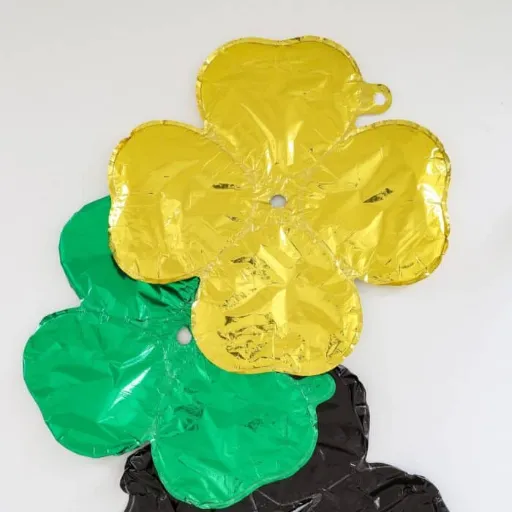
Before you begin, gather these helpful tools:
Required Tools
- Straw or Thin Pipe: The most important item for inserting into the sealing valve
- Gentle Hands: For applying steady pressure during deflation
Optional Tools
- Scissors: Only if you’re not planning to reuse the balloon
- Reusable Storage Bags: For protecting deflated balloons from damage
- Special Deflation Pumps: For large event balloons
Step-by-Step Deflation Process

Follow these steps for safe and effective balloon deflation:
Method 1: Standard Deflation
- Prepare Your Workspace: Ensure the area is clean and safe
- Locate the Valve: Find the self-sealing valve at the neck of the balloon
- Insert the Straw: Gently insert a straw or thin object into the valve
- Apply Gentle Pressure: Press lightly on the balloon surface to guide air out
- Work Systematically: Start at the neck and move downward in steady motions
- Complete Deflation: Continue until the balloon is completely flat
Method 2: Quick Release (Non-Reusable)
- Locate the Knot: Find the tied end of the balloon
- Untie or Cut: Carefully untie the knot or cut it off
- Control Release: Hold the neck to control helium escape
- Guide Deflation: Allow air to escape slowly to prevent tearing
Safe Deflation Techniques for Letter/Number Balloons
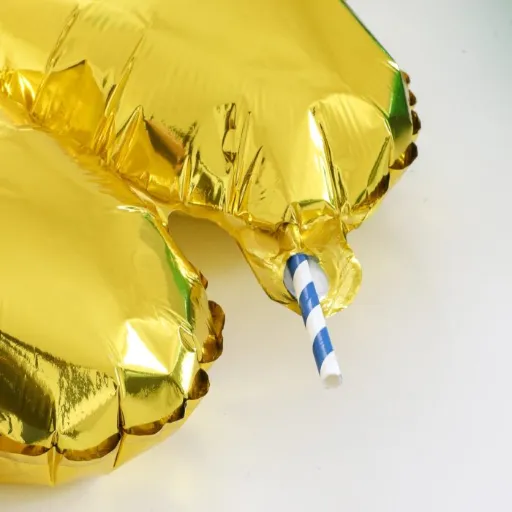
Letter and number balloons require special care due to their unique shapes:
| Step | Action | Why It Matters |
|---|---|---|
| 1 | Use deflation tools instead of improvised items | Reduces puncturing risk by 45% |
| 2 | Apply steady, even pressure | Prevents material strain and creases |
| 3 | Avoid sharp objects completely | Maintains reusability potential |
| 4 | Follow natural fold lines | Extends balloon lifespan by 30% |
Common Mistakes to Avoid
Warning: These common errors can damage your balloons and reduce their reusability:
Top 5 Deflation Mistakes
- Skipping Proper Tools: Attempting deflation without a straw or deflation device can damage the self-sealing valve
- Using Excessive Force: Harsh squeezing creates creases or punctures that compromise structure
- Ignoring Cleanliness: Failing to clean balloons before storage can cause stains or discoloration
- Improper Storage: Crumpling or haphazard folding leads to wrinkles and tearing
- Intentional Puncturing: This renders balloons unsuitable for reuse and contributes to waste
Storage and Reuse Tips
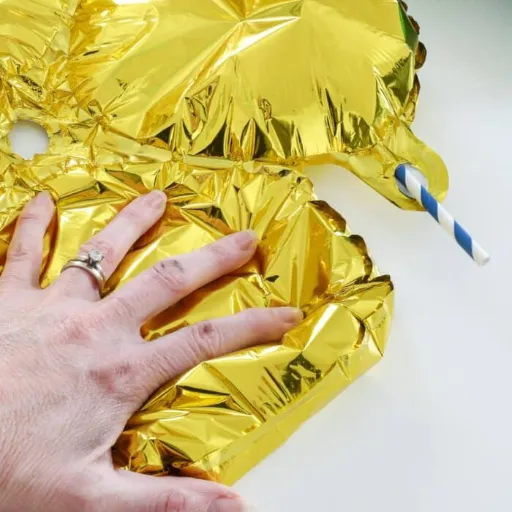
Proper Storage Method
- Clean First: Wipe balloons with a damp cloth before storage
- Fold Carefully: Follow natural crease lines when folding
- Choose Right Location: Store in cool, dry places away from sharp objects
- Use Protection: Place in airtight, resealable bags to prevent damage
Maximizing Float Time for Future Use
- Use the correct amount of helium for optimal buoyancy
- Keep balloons away from direct sunlight and heat sources
- Handle gently to maintain valve integrity
- Follow manufacturer guidelines for specific balloon types
Eco-Friendly Practices
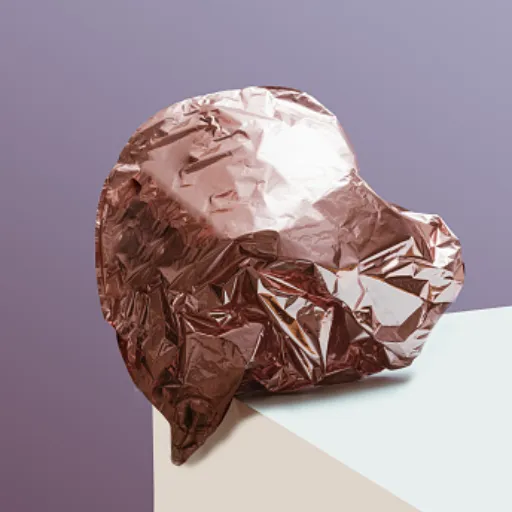
Make your balloon use more sustainable with these practices:
Environmental Best Practices
- Choose Reusable Options: Invest in high-quality Mylar balloons designed for multiple uses
- Use Air Instead of Helium: For ground-based displays, air inflation conserves helium
- Proper Disposal: Cut balloons into small pieces before disposal to prevent wildlife entanglement
- Recycling: Check local facilities that accept Mylar materials
- Alternative Decorations: Consider biodegradable paper or reusable fabric decorations
Sustainability Fact: Global helium reserves are increasingly rare, with demand increasing by 15% in recent years. Every conservation effort counts!
Creative Uses for Deflated Balloons

Don’t throw away those deflated balloons! Here are innovative repurposing ideas:
- Art Projects: Create mosaics or colorful garlands
- Stress Relief: Fill with rice or beans to make stress balls
- Craft Supplies: Cut into shapes for scrapbooking or decorative elements
- Educational Tools: Use for science experiments or teaching materials
Reference Sources
- Balloons Online Blog
- Title: How to Deflate Foil Balloons the Right Way
- This blog provides a step-by-step guide on deflating foil balloons, including the use of a drinking straw to release air effectively.
- Chaoee Blog
- Title: How to Deflate Foil Balloons Easily
- This source explains the tools and techniques needed to deflate foil balloons safely and efficiently.
- Anagram Balloons Merchandising Guide
- Title: Balloon Merchandising Guide
- This guide includes safety tips and best practices for handling foil balloons, which can be useful for understanding the deflation process.
Frequently Asked Questions
How long can I store a deflated foil balloon?
When properly stored in a cool, dry place, deflated foil balloons can last for several years and maintain their ability to hold helium for future use.
Can I refill a balloon that’s been deflated?
Yes! As long as the self-sealing valve hasn’t been damaged during deflation, you can refill the balloon with helium or air multiple times.
What should I do if the valve gets damaged?
If the valve is damaged, the balloon can still be used for air-filled decorations but won’t hold helium effectively. Consider using it for craft projects instead.
Is it safe to deflate balloons around children?
Always supervise children during balloon deflation. The process should be done by adults to ensure safety and proper technique.
How can I tell if a balloon is suitable for reuse?
Check for tears, holes, or damage to the valve. If the balloon material is intact and the valve seals properly, it’s likely suitable for reuse.
Final Tip: By following proper deflation techniques and adopting eco-conscious practices, you can enjoy celebrations while protecting the environment and saving money through balloon reuse!

